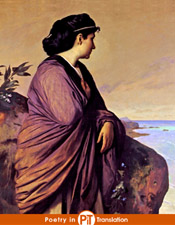Goethe’s Iphigenia In Tauris
, translated by Kline, A. S. (contact-email)
Johann Wolfgang von Goethe (1749-1832) was in Italy and Sicily from 1786 to 1788, a period that profoundly influenced his poetic and philosophical development. In Rome, his proximity to the remnants of the Roman Classical world, and in Sicily, to Classical Greek architecture, deepened his appreciation of ancient Greco-Roman culture—a process shaped by Winckelmann’s writings. This immersion in Classicism moderated his early Romantic tendencies, impacting his subsequent works. Iphigenia in Tauris is a reworking by Goethe of the tragedy by the ancient Greek playwright Euripides. It describes the chance encounter between Iphigenia, Agamemnon’s daughter: now serving as the priestess of Artemis on the wild coasts of Tauris, and her estranged sibling, Orestes. The story follows the siblings’ escape from the local custom of ritual sacrifice.

Kline, A. S.
Support Open-Access:
Your contribution keeps our classical translations available to all. Every dollar helps support classics education and funds the expansion of our catalogue. Value what we do? Donate now.
File Downloads:
© Copyright, All Rights Reserved. This work may be freely reproduced, stored and transmitted, electronically or otherwise, for any non-commercial purpose. Conditions and Exceptions apply.